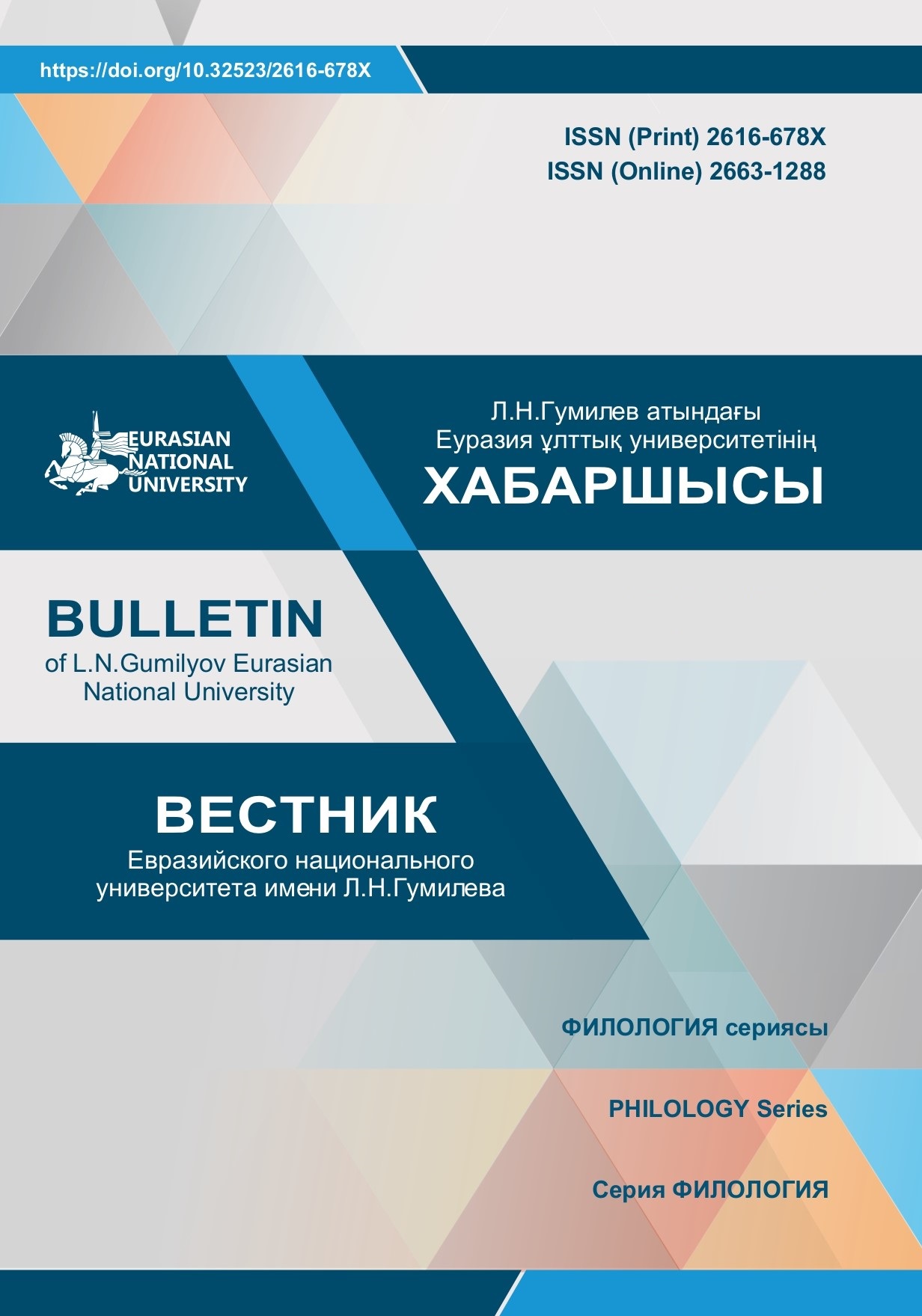Semantic features of the word "heart" in Abay's works
Views: 224 / PDF downloads: 275
DOI:
https://doi.org/10.32523/2616-678X-2023-144-3-111-119Keywords:
Abai Kunanbayuly, heart, meaning, case endings, person, lexical meaning, poetic meaningAbstract
The article examines the semantic features of the word "heart" in combination with other words in the works of the Abai Kunanbayuly. In this article, about one hundred phrases related to the word "heart" were grouped into seven groups and analyzed. These phrases were analyzed to determine the meaning of the word "heart" when combined with other words in one of the seven cases. The poetic meaning of the word "heart" when combined with other words was considered. According to the thesaurus, poetic structures related to the word "heart" were grouped according to seven adverbial endings of the Kazakh language, thereby determining the poetic features and semantic meaning of the word "heart". In other words, through the lexical meaning and grammatical meaning of the word "heart", its associated words were analyzed, and figurative phrases related to the word "heart" were determined. The word "heart" in Abay's works, no matter what case it is in, means a person himself, a person's intentions, feelings, mood, and character. The main feature of the use of the word "heart" in Abay's works is that a person can regulate his life and behavior through "heart". It was shown that if one does something with their heart, if one does not just look at their heart, but look deep into the bottom of their heart, they can direct their thoughts, words, character, destiny, and life to the right path.







